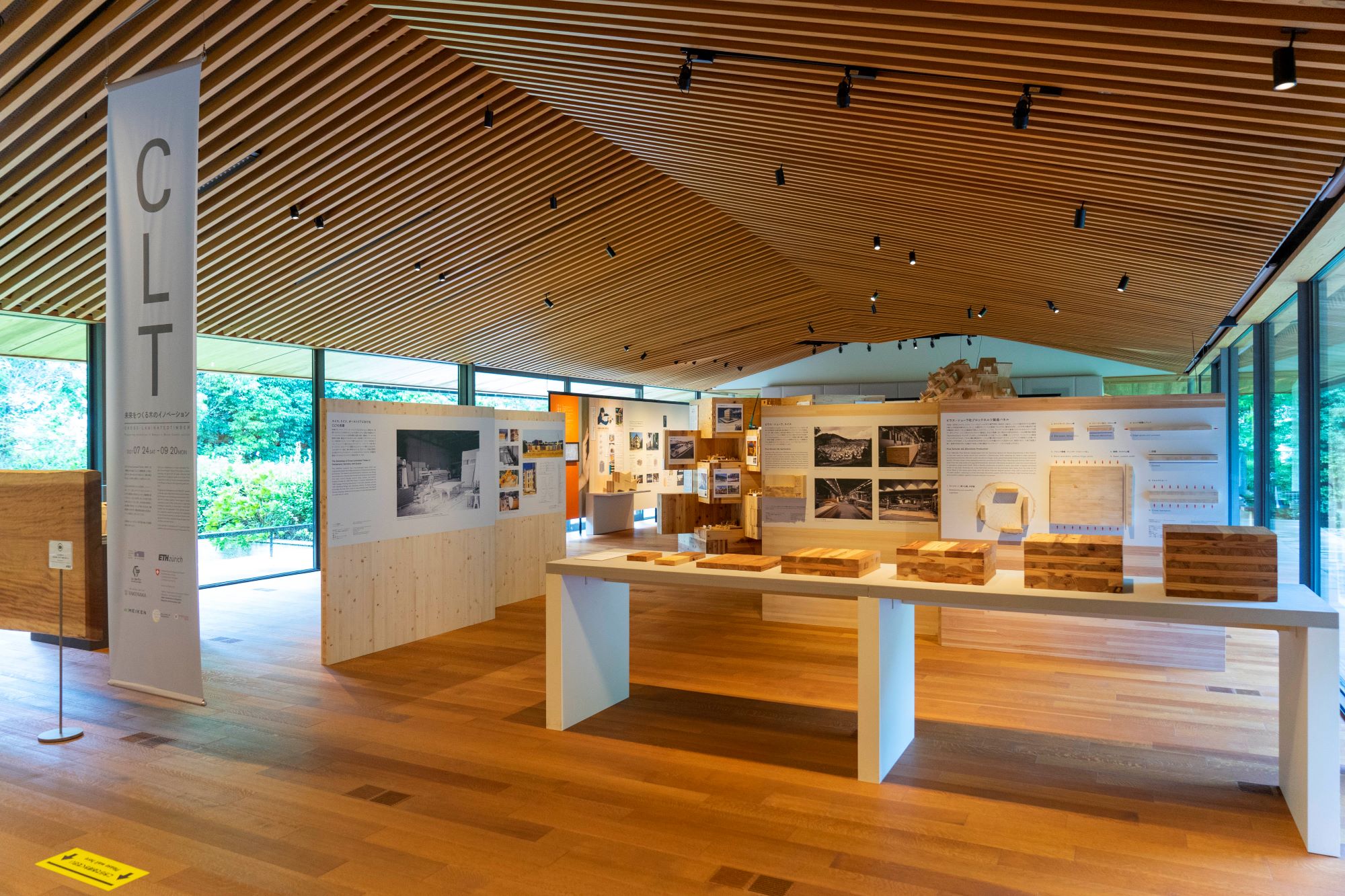Dr. Patrick Fleming - JP

What made you decide to apply for a grant at the Leading House Asia?
As the global production of cross-laminated timber (CLT) continues to grow exponentially, the Japanese Government and timber industry are actively encouraging CLT production with Japanese-grown timber. Yet despite the growing popularity of CLT, its original development in Switzerland, Germany, and Austria has not been addressed in detail in existing literature. A collaborative project with a Japanese museum and Japanese researchers could offer an international platform to reflect on the past, present, and future of CLT development. An Opportunity Grant in cooperation with Asia was the perfect fit to support such a project.
How did you secure a research partner?
Patrick Fleming had recently contributed some written work for an exhibition held at the Takenaka Carpentry Tools Museum in Kobe, Japan, and we thought the museum’s special exhibition hall would be an ideal location to present a CLT exhibition. After reaching out to the museum and confirming their interest in our project and proposed exhibition on CLT, our main contact at the Museum, Dr. Marcelo Nishiyama, introduced our project to Professor Koshihara at the University of Tokyo and organized his participation in the exhibition. Professor Koshira’s contribution to the project provided a state-of-the-art review of CLT projects in Japan, and helped balance the overall content of the exhibition between European and Japanese experiences with CLT.
How would you describe your experience of the program?
The project was memorable in its challenges and how solutions were constantly found, allowing the project to move forward and overcome issues and problems, mainly associated with organizing an international exhibition during the global COVID-19 pandemic. In the end, the exhibition wouldn’t have been possible without the support of the museum staff, as travel to Japan was strictly restricted from Switzerland. Upon seeing the exhibition ‘virtually’, however, we observed how Japan’s strong tectonic tradition of working with wood, especially with small pieces in carefully crafted joints, strongly contrasted with the original design, manufacturing, and construction intentions of early CLT producers and designers from Europe.
What role did the Leading House Asia play in the program?
The Leading House Asia provided helpful support in administering our grant, promoting the project and exhibition, and providing valuable feedback from the reviewers of our original proposal at the start of the project. We appreciated this help and the opportunity to apply for a collaborative grant.
What were the impacts you made through the project/partners/individual?
The project resulted in a public exhibition at the Takenaka Carpentry Tools Museum in Kobe, Japan, which opened on July 24, 2021 and closely coincided with the opening of the Olympic Games in Japan. The exhibition closed on September 20, 2021, and also included an accompanying publication in English and Japanese that highlighted the main results of the research project and the exhibition materials.
In the end, our exhibition in Kobe attracted 2905 recorded visitors. Although this visitor number represented a noticeable reduction compared to the museum’s previous years predating the current COVID-19 pandemic, the exhibition was well received by the general public and gained the attention of key stakeholders in the Japanese timber industry. In addition to current research work at ETH Zurich, the material and research results presented in the exhibition and its accompanying publication showcased the work of Swiss architects (Rudolf + Esther Guyer Architekten), manufacturing (Pius Schuler AG, Schilliger Holz AG), and timber research (Berner Fachhochschule, Departement Architektur, Holz und Bau).
The exhibition’s accompanying publication was also widely distributed to Japanese universities, libraries, and made available to exhibition visitors directly at the museum. The publication has also been made available as an open-access book with its own digital-object identifier (DOI) in the ETH Library’s online Research Collection.
Testimonial: what were your personal experiences/thoughts on the bilateral cooperation experience?
The project resulted in a unique contribution to timber engineering literature by grounding the development of CLT within the longer tradition of wood construction. Our work also identified how key examples of previous engineered wood products like glulam, veneered wood panels (Tischlerplatten), and laminated veneer lumber (LVL) directly influenced the development of CLT. There is now a clear example in the literature of how the first initial idea or conceptualization of CLT and its implementation in Switzerland occurred within a timeframe of only 1 – 2 years. The rapid development of CLT, with the successful collaboration between architects, engineers, and industry, within an actual construction context offers a landmark example for future innovations.
In Switzerland, CLT was originally developed with the explicit aim to maximize prefabrication, while minimizing construction time and especially the number and visibility of construction joints. These original aims represent an on-going challenge to Japanese architects, engineers, and craftsman, who still practice in a long-standing tectonic tradition of expressing their timber joints and the precision of such joints. How CLT can be integrated into such a tectonic tradition remains as an interesting topic for future research.